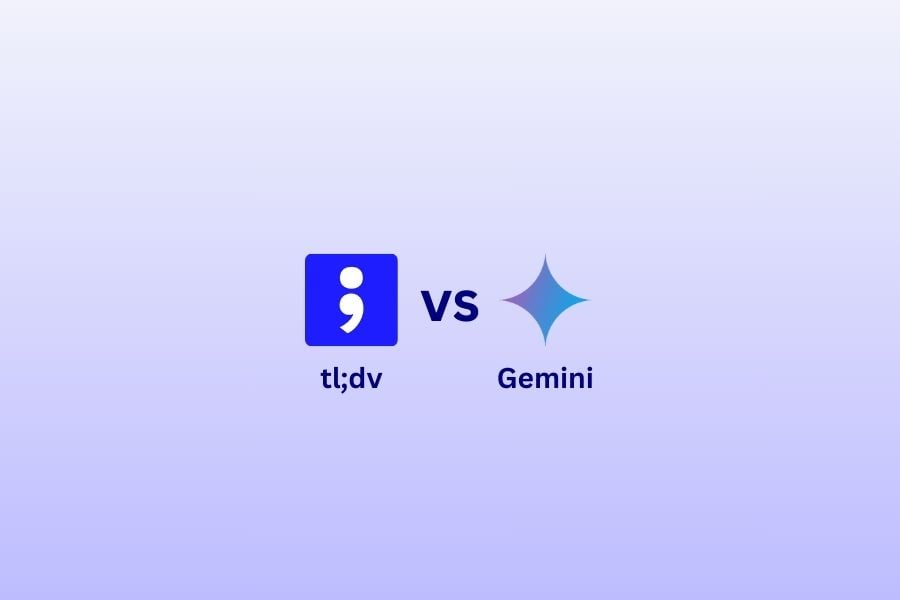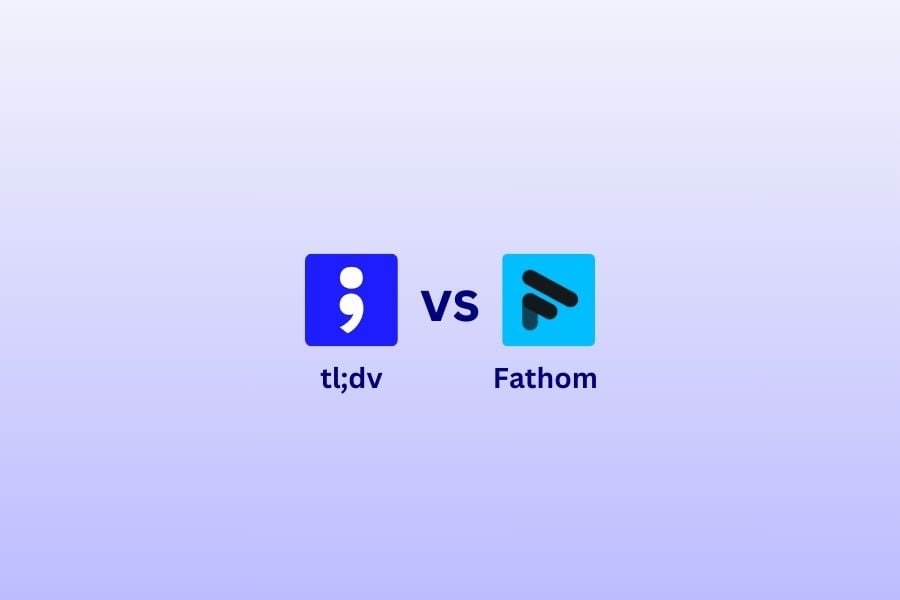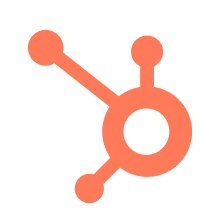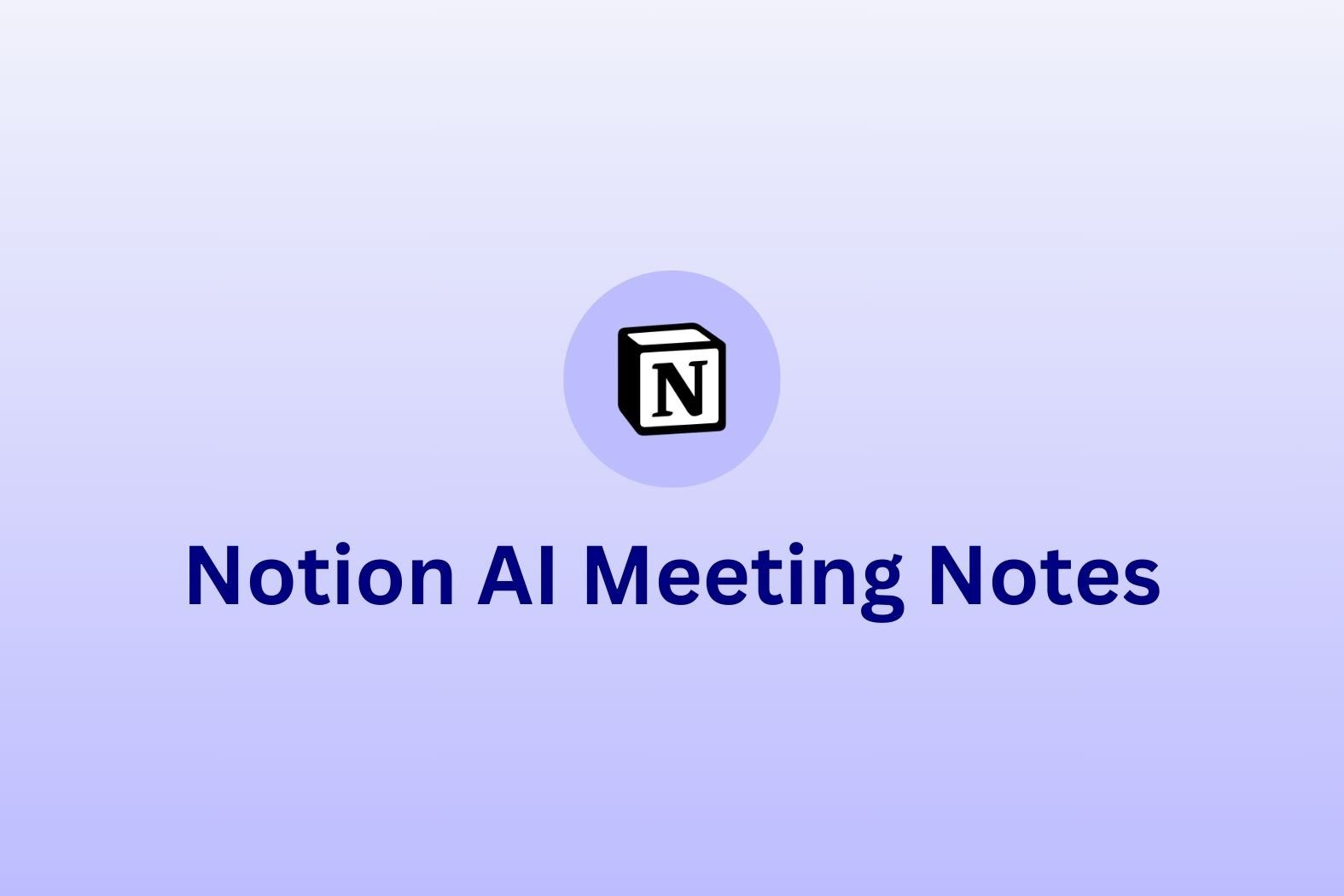Was die meisten nicht wissen, ist, dass Model Context Protocol (MCP) das Spiel für Google Meet (im großen Stil!) verändern wird. In diesem Beitrag erfahren Sie, was MCP ist, wie die Early-Access-Version von MCP für Meetings aussieht, wie die Zukunft aussieht und wie Sie jetzt auf den Zug aufspringen können. Lasst uns loslegen!
Jeder kennt Google Meet. Mit über 300 Millionen monatlichen Nutzern (mehr als das Doppelte von MS Teams!) ist es eine der führenden Videokonferenzplattformen der Welt.
MCP ist ein neues Protokoll von Anthropic , das es KI-Modellen ermöglichen soll, intelligenter mit Echtzeit-Besprechungsdaten zu interagieren. Stellen Sie sich eine Welt vor, in der Ihre Meetings nicht nur aufgezeichnet, sondern auch transkribiert und zusammengefasst werden, wobei die wichtigsten Notizen sofort und automatisch mit Ihren CRM- und Projektmanagement-Tools synchronisiert werden. All die lästigen Verwaltungsaufgaben, die Sie normalerweise erledigen müssen? Mit MCP wird das für Sie erledigt.
Aber... Google Meet MCP ist noch nicht fertig. Wenn Sie es selbst einrichten wollten, könnten Sie das, aber Sie bräuchten das technische Know-how, um Ihre eigenen Model Context Protocol-Server zu erstellen. Wenn sich das für Sie wie Kauderwelsch anhört, dann sollten Sie sich tl;dv ansehen, ein Tool, das bereits das tut, was MCP für Google Meet und andere Videokonferenzplattformen tun wird. Dazu später mehr, aber zunächst einmal: Was ist Model Context Protocol?
Inhaltsübersicht
Was ist das Model Context Protocol (MCP)?
Im Kern ist das Model Context Protocol (MCP) ein neuer Standard, der KI-gestützte Toolsin Echtzeitumgebungen wie virtuellen Meetings intelligenterund nützlicher machen soll. Betrachten Sie es als einen universellen Adapter, der als globaler Standard für alle zukünftigen KI-Projekte dienen soll. Mit MCP können KI-Modelle Daten aus der realen Welt extrahieren und selbstständig mit Ihren Tools (wie Google Drive) arbeiten.
Falls Sie es immer noch nicht begriffen haben, bedeutet dies, dass KI-Modelle in der Lage sein werden, Echtzeitdaten aus all Ihren vernetzten Arbeitstools abzurufen, ohne Sie um Erlaubnis fragen oder auf eine Eingabeaufforderung warten zu müssen.
Obwohl dies eine GROSSE Neuigkeit ist, ist es noch nicht so weit, dass der Durchschnittsbürger es einfach einstecken und ausprobieren kann. Man muss wissen, wie man einen Server einrichtet, ihn hostet und sich durch die GitHub-Repositories von MCP arbeitet. Es ist sicherlich möglich, aber es ist eine Menge Arbeit. Außerdem gibt es eine andere Lösung, die vielleicht sogar noch attraktiver ist. Bevor wir uns damit befassen, sollten wir uns ansehen, was MCP bei einer erfolgreichen Integration in Google Meet tatsächlich tun könnte.
Wie MCP Meetings verbessert
Stellen Sie sich vor, Sie befinden sich in einem Google Meet , und anstatt hektisch Notizen zu machen oder sich darauf zu verlassen, dass jemand anderes das Gespräch zusammenfasst, verfolgt ein KI-Assistent automatisch die wichtigsten Punkte, weist Aktionspunkte zu und erstellt eine Zusammenfassung des Meetings - alles in Echtzeit. Das ist es, was MCP ermöglicht. Sie ermöglicht es der KI, Meetings nicht nur aufzuzeichnen und zu transkribieren, sondern auch den Kontext zu verstehen: Wer spricht, welche Entscheidungen werden getroffen, und welche Folgemaßnahmen sind erforderlich?
Mit MCP können Besprechungen viel effizienter und umsetzbarer werden. Aber die wahre Stärke von MCP liegt in seiner Fähigkeit, sich auch mit anderen Tools zu integrieren. Stellen Sie sich MCP als einen digitalen Pass für KI vor, der in Ihrem Namen in Ihre Arbeitstools eintritt. Sie kann die Besprechungsnotizen automatisch in Ihr CRM-System eingeben, Follow-up-E-Mails generieren und versenden und sogar Aufgaben in verschiedenen Tools für die Zusammenarbeit zuweisen.
Nimmt Google Meet MCP bereits an?
Führt Google Meet also MCP ein? Noch nicht. Google hat zwar stark in KI investiert (siehe: Gemini, seine Antwort auf ChatGPT), gibt es keine offizielle Bestätigung, dass MCP in Meet integriert wird. Google hat jedoch bereits mit Anthropic (den Entwicklern von MCP) bei KI-bezogenen Projekten zusammengearbeitet, so dass es nicht ausgeschlossen ist, dass diese Technologie in Zukunft in irgendeiner Form in Meet integriert wird.
Im Moment bietet Google Meet einige KI-gestützte Funktionen wie Live-Untertitel, Hintergrundgeräuschunterdrückung und Meeting-Transkriptionen. Aber eine echte KI-gesteuerte Meeting-Automatisierung, wie sie MCP ermöglichen könnte, ist noch nicht verfügbar. Das bedeutet, dass Nutzer, die nach intelligenteren, automatisierten Meetings suchen, sich an Lösungen von Drittanbietern wenden müssen, die der Entwicklung bereits voraus sind.
Wenn Sie jedoch über das technische Know-how verfügen und Lust auf ein wenig DIY haben, können Sie lernen, wie man Googles Gemini 1.5 Pro-Modell mit dem Model Context Protocol (MCP) von Anthropicüber ein von der Community erstelltes Notebook auf GitHub verwendet. Entwickler erforschen bereits, wie Google-Produkte mit MCP verwendet werden können. Wenn sie also etwas nicht offiziell veröffentlichen, können Sie es trotzdem in die Finger bekommen.
Brauchen Sie einen MCP für Google Meet?
An Funktionen mangelt es Google Meet nicht, aber wenn es um KI geht, bewegt es sich immer noch an der Oberfläche. Derzeit erhalten Nutzer Live-Untertitel, automatische Transkription (wenn Sie bestimmte Google Workspace-Tarife nutzen), Geräuschunterdrückung und einige grundlegende visuelle Verbesserungen wie Beleuchtung und Hintergrundunschärfe. Hilfreich? Sicher. Intelligent? Nicht ganz.
Die Schwachstelle liegt in der kontextbezogenen Intelligenz. Tools wie MCP von Anthropicwurden entwickelt, um der KI ein strukturiertes Verständnis dessen zu geben, was in einem Meeting passiert, aber dieses Maß an semantischem Bewusstsein und Automatisierung ist noch nicht in Google Meet integriert. Es gibt keine native Verfolgung von Aktionspunkten. Keine Echtzeit-Zusammenfassungen. Kein Meeting-Speicher. Wenn Sie etwas verpassen, müssen Sie sich durch eine Abschrift wühlen oder eine vollständige Aufzeichnung ansehen. Das ist nicht gerade effizient.
Hier werden MCP-ähnliche Funktionen benötigt. Stellen Sie sich vor, dass Google Meet automatisch Aktionspunkte markiert, sobald sie auftauchen, Nachfassaktionen sendet oder Sie in Ihren Meetings nach "dem Moment, als das Marketing den neuen Kampagnennamen genehmigt hat" suchen lässt. Das ist die Zukunft. Aber im Moment ist die Lücke klar: Die KI von Google Meetist funktional, aber noch nicht intelligent.
Wenn Google plant, etwas wie MCP zu integrieren (und das könnte der Fall sein, vor allem angesichts der früheren Zusammenarbeit mit Anthropic), ist dies noch nicht bekannt. In der Zwischenzeit müssen sich Nutzer, die auf der Suche nach einer KI-Meeting-Erfahrung der nächsten Generation sind, an Tools wenden, die dies bereits tun.
tl;dv's hat seinen eigenen MCP-Server gestartet
tl;dv freut sich, die Veröffentlichung des offiziellen Model Context Protocol (MCP) Servers für tl;dv bekannt zu geben - der erste seiner Art, der volle Unterstützung für Google Meet, Zoom und Microsoft Teams bietet.
MCP für Meetings: Wie kann tl;dv helfen, einen frühen Zugang zu erhalten?

Während sich die Branche darüber aufregt, was mit Google Meet MCP kommen könnte, bietettl;dv bereits heute viele dieser Vorteile. Es handelt sich um einen KI-Meeting-Assistenten, der wie ein MVP der realen Welt wirkt, was MCP zu sein verspricht: intelligentere Meetings, weniger manuelle Arbeit und KI, die tatsächlich den Kontext versteht.
Sie brauchen sich nur einige der Funktionen von tl;dvanzusehen, um den Vergleich mit MCP zu verstehen. Werfen wir einen Blick auf die drei wichtigsten und werfen wir dann einen Blick in die Zukunft:
- Automatisches Ausfüllen von CRMs
- Multi-Meeting-Intelligenz und Sprecheranalyse
- Planen von wiederkehrenden Berichten
- Kontinuierliche Innovation
1. Automatisches Ausfüllen von CRMs
tl;dv zeichnet auf, transkribiert und fasst Ihre virtuellen Meetings zusammen und kann diese Zusammenfassungen und Notizen automatisch mit mehr als 5.000 Tools von Drittanbietern synchronisieren, einschließlich tiefer Integrationen mit CRMs.
Am Beispiel des Vertriebs bedeutet dies, dass Ihre Mitarbeiter nicht nach jedem einzelnen Verkaufsgespräch die Kundeninformationen manuell ausfüllen müssen. Stattdessen können sie sich auf das Gespräch konzentrieren und zügig zum nächsten übergehen, während die KI das CRM in ihrem Namen aktualisiert.
tl;dv bietet Ihnen Vorlagen für Besprechungsnotizen, mit denen Sie Ihre Besprechungsnotizen nach Belieben gestalten können. Diese können für verschiedene Arten von Gesprächen angepasst werden. So kann beispielsweise ein Verkaufsgespräch in einem bestimmten Format zusammengefasst werden, während für ein Bewerbungsgespräch wahrscheinlich ein ganz anderes Format verwendet wird. Sie können selbst entscheiden, wie die KI die Notizen für Sie anlegt.
2. Multi-Meeting Intelligence und Sprecheranalyse
Die Gesprächsintelligenz von tl;dvist die nächste Stufe. Seine künstliche Intelligenz ist kontextabhängig und speichert alle Ihre Meetings. Wenn Sie einen bestimmten Moment in all Ihren Meetings suchen, können Sie mit dem tl;dv Chatbot sprechen, um ihn schnell zu finden. Noch besser: Sie können den Chatbot nutzen, um mehrere Gespräche gleichzeitig zu analysieren und Muster und Trends zu erkennen, die für die Verbesserung Ihrer Geschäftsstrategien entscheidend sein könnten.
Dies ist eine fantastische Möglichkeit, kontinuierliche Vertriebsschulungen zu implementieren, da die Mitarbeiter mit Hilfe der KI selbst coachen können. Es gibt auch ein Dashboard zur Sprecheranalyse, das Durchschnittswerte wie die Länge des Monologs, die verwendeten Füllwörter und das Verhältnis zwischen Rede und Zuhören erfasst. Diese Werte können mit den playbooks verglichen werden, damit die Mitarbeiter sehen können, wo sie sich verbessern müssen. Außerdem können Vertriebsmanager hier verfolgen, ob sich die Mitarbeiter an ihre Verkaufsskripte halten, und es gibt Scorecards und sogar KI-Tipps zur Einwandbehandlung.
3. Planen von wiederkehrenden Berichten
Mit tl;dv können Sie wiederkehrende Berichte planen, um häufige Aktualisierungen direkt in Ihrem Posteingang zu erhalten. Nehmen wir an, Sie möchten wöchentliche Zusammenfassungen aller Anrufe Ihres customer success erhalten und dabei insbesondere diejenigen hervorheben, in denen es um Wettbewerber geht. Sie brauchen nur ein paar Filter auszuwählen, und schon sind Sie dabei. Jede Woche schickt Ihnen die KI von tl;dvBerichte über die spezifischen Themen, die Sie angefordert haben, und zwar für die spezifischen Meetings, die Sie einschließen möchten.
Genau so wird auch Google Meet mit MCP funktionieren. Der einzige Unterschied besteht darin, dass Sie mit tl;dv sofort loslegen können, während Googles potenzielle MCP-Einbindung Monate oder Jahre dauern kann oder vielleicht gar nicht kommt. Sicher, Sie können es selbst bauen, wenn Sie die Zeit und die Ressourcen haben, aber Sie werden auch auf Anrufe von MS Teams oder Zoom verzichten müssen, die tl;dv ebenfalls abdeckt.
Um es einfach auszudrücken: tl;dv ist die Early-Access-Version von MCP, die Sie bereits jetzt nutzen können. Sie bietet Ihnen eine leistungsstarke, benutzerfreundliche Oberfläche, funktioniert auf allen Meeting-Plattformen, die Sie bereits nutzen, und überspringt den üblichen KI-Hype. Es funktioniert einfach - und es funktioniert heute.
Fortlaufende Innovation: Was hält die Zukunft für MCP und tl;dv bereit?
Während die Giganten noch das Wasser testen, baut tl;dv das Boot, steuert den Ozean und entwirft die Pläne für das nächste Schiff. tl;dv reagiert nicht nur darauf, wohin sich der Markt entwickelt, sondern nimmt es vorweg. Während MCP erst vor ein paar Monaten als Open Source veröffentlicht wurde, gibt es die MCP-ähnlichen Funktionen von tl;dvschon seit über einem Jahr.
Ob es um das Hinzufügen neuer, innovativer Funktionen, die Verbesserung der Transkriptionsgenauigkeit in verschiedenen Sprachen oder die Entwicklung intelligenterer Such- und Tagging-Workflows geht, tl;dv entwickelt sich schnell. Und während Tools wie Google Meet vielleicht irgendwann eine MCP-ähnliche Funktionalität bieten, ist tl;dv bereits meilenweit voraus und verfeinert und erweitert das, was möglich ist. Betrachten Sie es weniger als "mithalten", sondern eher als den Standard setzen.
Teams, die führen und nicht folgen wollen, sollten also nicht auf Google Meet MCP warten. Ergreifen Sie die Initiative und beginnen Sie mit tl;dv; es umfasst unbegrenzte kostenlose Aufzeichnungen, Transkriptionen und Zusammenfassungen, und es dauert etwa zwei Minuten, um ein Konto zu erstellen. Es gibt keinen Grund, es nicht auszuprobieren.

Google wird demnächst im Rahmen seiner Gemini die Erstellung von Notizen auf den Markt bringen - wie sieht das im Vergleich zu tl;dv aus?
Warten Sie nicht auf die Zukunft - nutzen Sie sie jetzt
Das Model Context Protocol (MCP) ist bereit, Wellen zu schlagen, insbesondere wenn es als globaler Standard angenommen wird. Es bringt Echtzeit-Intelligenz, Automatisierung und kontextbezogenes Verständnis in die KI-Welt. Google Meet könnte MCP irgendwann übernehmen oder etwas Ähnliches entwickeln, aber die Wahrheit ist: Es ist noch nicht so weit.
Was hier und jetzt ist, ist tl;dv. Wenn Sie auf der Suche nach einem Tool sind, das bereits viele der von MCP versprochenen Vorteile für Google Meet und darüber hinaus bietet, dann haben Sie es gerade gefunden. Von durchsuchbaren Zusammenfassungen bis hin zu intelligenten Integrationen bietet tl;dv Teams eine praktische und intuitive Möglichkeit, ihre Anrufe noch heute zu optimieren.
Wenn Sie es leid sind, auf kluge Meetings zu warten, und wenn Sie weiterkommen wollen, während andere noch ihren Fahrplan planen, dann isttl;dv der richtige Schritt. Probieren Sie es jetzt aus. Ihre Zukunft wird es Ihnen danken.
FAQs zu Google Meet und dem Model Context Protocol (MCP)
Was ist das Model Context Protocol (MCP)?
MCP ist ein offenes Protokoll, das es KI-Modellen ermöglicht, Echtzeit-Softwareumgebungen wie Meetings, Cloud-Speicher und Tools von Drittanbietern zu verstehen und mit ihnen zu interagieren. Es liefert kontextbezogene Daten, sodass KI intelligentere Erkenntnisse, Maßnahmen und Zusammenfassungen liefern kann.
Verwendet Google Meet MCP?
Bislang unterstützt Google Meet MCP nicht öffentlich und integriert es auch nicht. Obwohl Google stark in KI investiert (insbesondere durch Gemini), gibt es noch keine offizielle Ankündigung, Meet mit MCP zu verbinden.
Hat Google die Arbeit von MCP oder Anthropicanerkannt?
Google hat in der Vergangenheit mit Anthropic (den Entwicklern von Claude und MCP) zusammengearbeitet und ist ein Investor. Es gibt jedoch keine öffentliche Bestätigung von Google, dass sie MCP speziell in ihre Tools wie Meet oder Docs einbinden werden.
Wie würde MCP Google Meet verbessern?
MCP könnte fortschrittliche KI-Funktionen in Meet unterstützen, z. B. Zusammenfassungen in Echtzeit, automatische Nachverfolgung von Maßnahmen, intelligente Nachbereitung oder sogar Live-Einblicke während des Gesprächs. Außerdem können Workflows nach dem Gespräch automatisiert werden, indem Besprechungsnotizen automatisch mit CRMs und Projektmanagement-Tools synchronisiert werden. Im Grunde genommen würden die Meetings dadurch produktiver und weniger manuell.
Was ist heute die Alternative zu MCP bei Google Meet ?
Tools wie tl;dv bieten bereits viele MCP-ähnliche Vorteile, darunter durchsuchbare Zusammenfassungen, automatisierte Workflows nach dem Gespräch und KI-generierte Meeting-Notizen. tl;dv funktioniert plattformübergreifend (einschließlich Google Meet) und fungiert als Vorabversion dessen, was MCP in Zukunft nativ ermöglichen könnte.
Verwendet tl;dv MCP unter der Haube?
Nein, aber das ist auch nicht nötig. tl;dv wurde unabhängig entwickelt, um dieselben Kernprobleme zu lösen, die MCP anstrebt, und verfügt über eine eigene Infrastruktur und Benutzeroberfläche, die für eine sofortige Nutzbarkeit auf allen Konferenzplattformen ausgelegt ist.
Sollte ich auf die Übernahme von MCP durch Google warten oder jetzt tl;dv verwenden?
Wenn Ihr Team nicht gerne auf die Einführung experimenteller Funktionen durch Tech-Giganten wartet, sollten Sie nicht warten. tl;dv bietet Ihnen den Großteil der MCP-Magie schon heute. Sie machen Ihre Meetings zukunftssicher und steigern die Produktivität jetzt, nicht später.

Fathom wurde gehypt und als "kostenloser Protokollierer" angepriesen. Wir wollten wissen, wie es sich gegen tl;dv schlägt, wenn es von Teams verwendet wird. Leider wurden wir ein wenig enttäuscht ...





